 Order crests, pins and name tags online!
Order crests, pins and name tags online!
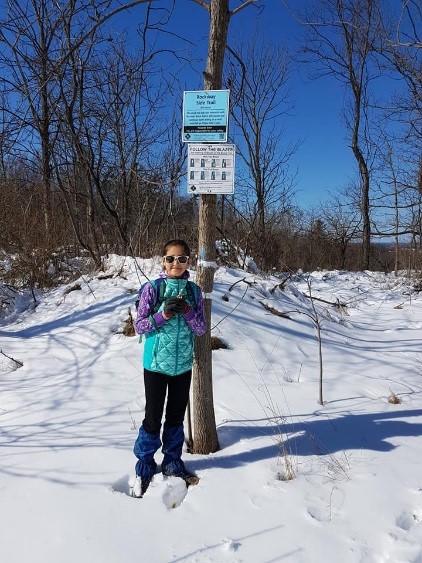
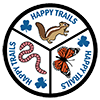 Challenge Overview
Challenge Overview
This challenge was designed by Mona J., a 3rd-year Guide in the 2nd Ontario Lone Unit, as part of her Design Your Own Badge project. Mona’s challenge was inspired by the Bruce Trail, a hiking trail going 900 km along the length of the Niagara Escarpment in Ontario.
Mona encourages every girl taking this challenge to find a trail in her community to have fun and explore nature. The Happy Trails crest will be available for purchase online mid-February.
There are places to hike and experience the natural environment pretty much everywhere in Canada! You may discover some of the remarkable hiking routes that cover our country and challenge yourself to explore somewhere new.
It is important to include all people in enjoying hiking, especially kids and families. In some places, there are hiking trails that are more accessible for people with disabilities or families with little kids. We want the challenge to be about having fun, exploring nature and learning something new, even if you don’t go very far on your hikes.
Happy hiking everyone!
Challenge requirements:
If you are doing the challenge with your unit, your Guider will help monitor the activities. If you are doing the challenge independently, you will want to keep a hiking log. This is a notebook where you write down the hike location, date, weather and the activities you do. Some people keep GPS tracks on a smartphone to show where they hiked and add notes or comments. You may be able to do this with help from an adult.
To start or finish the challenge, do the following:
Sparks: go hiking on a local trail or trails at least 3 different times.
Embers: go hiking on a local trail or trails at least 3 different times. Share your experience with your unit by creating a drawing, photograph, story or poem.
Guides: go hiking on a local trail or trails at least 4 different times. Challenge yourself at least one of these times to go to a trail you have never visited before. Share your hiking experience with your unit by creating a drawing, photographs, story or poem.
Pathfinders and
Rangers: go hiking on a local trail or trails at least 5 different times. Challenge yourself at least one of these times to go to a trail you have never visited before. With appropriate assistance, provide leadership for activities on at least one of the hikes.
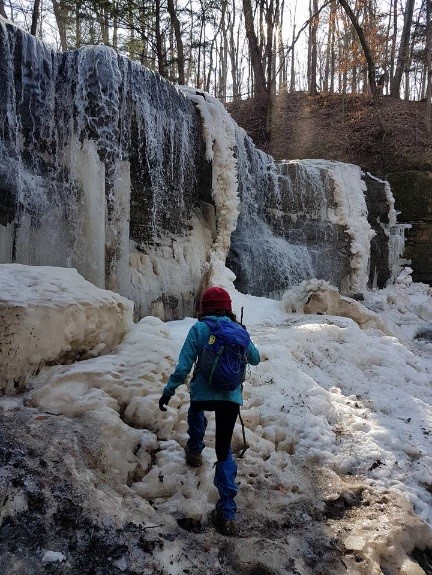

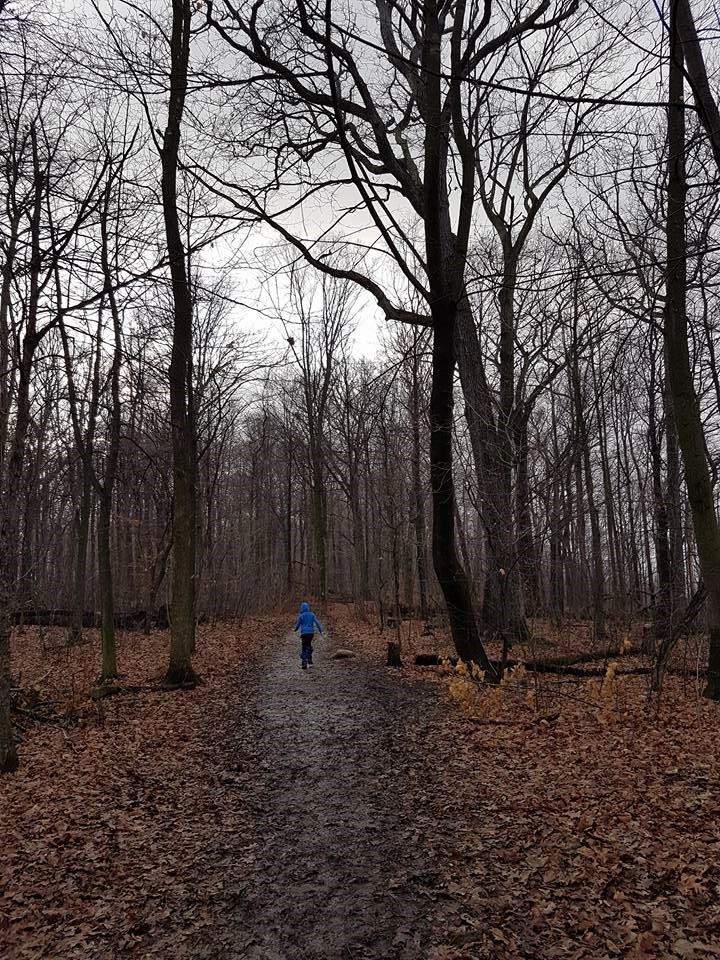
There are three parts to the challenge. You can earn some parts of the challenge, or all of them.
To earn each part of the challenge, do the following:
Sparks: complete at least two activities per section
Embers: complete at least three activities per section
Guides: complete at least four activities per section
Pathfinders and Rangers: complete at least five activities per section
Chipmunk – Get outside and move around!

We like chipmunks because they are cute and they like to jump around and look for seeds. They are little and they live everywhere on the Niagara Escarpment and all over Ontario. This part of the challenge is all about learning how to hike safely and have fun.
Chipmunk activities:
Read the Bruce Trail User’s Code, or another code of conduct for hiking. Think about how these rules make hiking safer, better for the environment and respect the people living nearby.
- Learn about how the trails are marked on a local trail. Try being the hiking leader and lead your unit, friends or family along the trail blazes.
- Play a game with your unit in the forest along a hiking trail. Find a safe place to play and make sure people know how to move safely on uneven terrain.
- Try climbing a steep trail on a hill or a switchback. Learn how to climb up and down slopes safely. If mobility is a challenge, learn about and try out some safe and practical ways to enjoy hiking based on your abilities.
- Make a “be prepared kit” for hiking. Think about what is important to take to be safe and comfortable on the trail and make a list. Discuss how this “be prepared kit” may be different across seasons or locations.
- Plan a hiking picnic with your unit. Make sure to use low-impact cooking or bring foods that do not need cooking. Make sure to pack out all of your garbage.
- Learn how to read a map of the Bruce Trail or another local trail. Identify the cardinal directions as you are hiking on the trail. Look for landmarks on the map and identify them as you hike. Discuss how to use a compass or a GPS for navigation.
- Discuss with your unit what you would do if you got lost while hiking. Discuss what you can do to keep from getting lost. Think about how you might feel if someone got lost. What would you do to stay safe and make it easier to be found again?
Earthworm – Love the earth and get dirty!

Earthworms are important for the soil and the earth. Hiking trails are made of dirt and rocks and there is a lot of geology and geography to see. This part of the challenge is all about thinking about the rocks and soil, learning about geography, and protecting the environment when you hike.
Earthworm activities:
- Learn more about the Niagara Escarpment, the types of rocks it is made of and how the Escarpment was formed. Look at a map of the Escarpment and find out where and how far the Niagara Escarpment goes.
- Pick up and pack out garbage that you find around you as you are hiking.
- There are different ways that communities, provinces and our country protect the natural spaces around us. Learn about the differences between municipal parks, conservation areas, provincial parks, national parks, crown land and private landowner partnerships.
- Learn how people go to the bathroom when hiking the trail or out in nature. Learn appropriate means to protect the environment, water quality and leave no trace.
- Look for signs of erosion on the trail. Identify natural erosion and erosion caused by humans. Discuss with your group how to minimize erosion when hiking.
- Identify ways that local trail clubs or parks management have made hiking trails safer, tried to prevent erosion or made hiking easier for people with different mobility.
- Read about different projects that have worked to preserve forest and natural regions near cities, such as the Ontario Greenbelt, Oak Ridges Moraine, Niagara Escarpment UNESCO Biosphere Reserve or a protected region close to your community. Discuss why it is important to balance human and industrial development with natural spaces.
Monarch Butterfly – Appreciate the natural beauty of our environment!
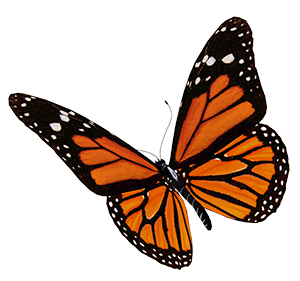
Monarch butterflies are very pretty and they migrate or travel across Ontario, just like the hikers who travel on the Bruce Trail or other trails in Canada. The butterflies remind us to notice the beauty of the biology around us and people being part of nature. This part of the challenge is all about observing the plants, animals and changes in the seasons.
Monarch Butterfly activities:
- Try hiking in different seasons or in different weather conditions. Observe and compare what things remain the same and what things are different.
- Identify at least 3 types of trees from the shape of the tree, the bark and leaves. Identify at least 3 plants growing along the ground. Discuss how plants are useful to people and animals.
- Identify at least 3 animals by seeing them when out on your hike. How else can you know that there are animals on the trail? Look for animal tracks, listen for sounds of animals, find animal feces (poop) or feathers, or any other evidence and see if your list of animals has increased.
- Learn about invasive species that are in your region. Are you able to observe them when you are hiking? Learn about how people are working to manage and reduce the impact of invasive species in your region.
- Discuss what animals stay in Ontario through all seasons and what animals migrate. Look for places that animals may have created nests or dens along the trail. Try to guess what animal might have lived there.
- Do you know any songs about hiking? What about songs that help keep the beat of your steps when hiking? Learn 3 songs about hiking and sing them with your unit.
- Take time when hiking to stop quietly and listen to the environment around you. What can you hear? Identify sounds of nature around you. Identify sounds made by people and other human activities in the environment.
- Read some stories about people’s adventures while hiking. Look online for resources, such as the Bruce Trail Conservancy website, read a local club newsletter, find a library book or look for a blog online about people’s travels while hiking.